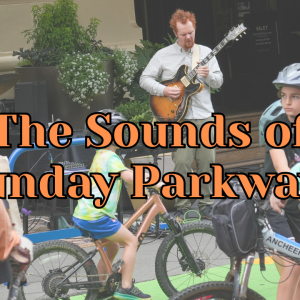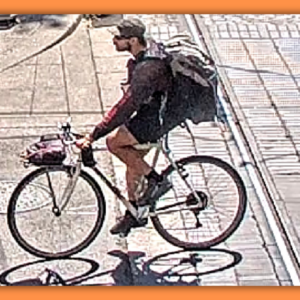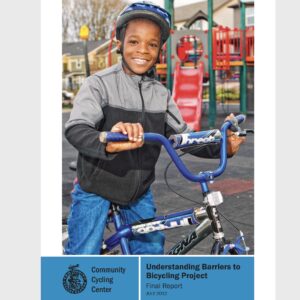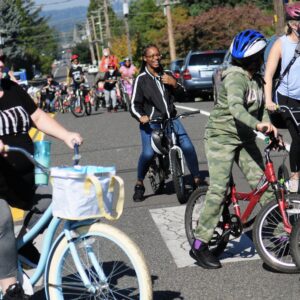When I started getting seriously interested in bicycles a few years ago, I already knew they were pollution-free, cheap, healthy, quiet, nonlethal and space-efficient.
What threw me for a loop, when I was talking to other Portlanders who were already interested in bicycles, was that they kept talking about community. Biking (and walking, and public transit) connected them with their neighbors and surroundings in a way that driving can’t.
The idea, it turned out, is backed up by science.
This week, two of the first Portlanders who I first heard talking about this concept, Elly Blue and Joe Biel of local company Microcosm Publishing, released a compelling short video about Portland’s Sunday Parkways open-streets festival that captures the idea and its relationship with one of Portland’s longstanding challenges: racial segregation, both socially and spacially.
Advertisement
Linda Ginenthal, the Portland Transportation Bureau staffer who created Sunday Parkways, is one of several community voices here explaining how it works.
The piece is especially powerful if you know that one of the people behind this video is Phyllis Porter, a Seattle-based biking advocate who has been a force behind her city’s effort (so far with mixed success) to replicate Sunday Parkways there. Porter, who is black and lives in Seattle’s racially diverse Rainier Valley district, can be heard conducting some of the interviews.
This video (which actually premiered online yesterday on Seattle Bike Blog) is the latest in Microcosm’s Groundswell film series highlighting underappreciated participants the national biking movement. We covered an earlier Portland-based piece in the series here, and you can check out the full series so far here.
— Michael Andersen, (503) 333-7824 – michael@bikeportland.org






Thanks for reading.
BikePortland has served this community with independent community journalism since 2005. We rely on subscriptions from readers like you to survive. Your financial support is vital in keeping this valuable resource alive and well.
Please subscribe today to strengthen and expand our work.
Nice.
You’ve only been interested in cycling for a “few” years? Surprising – figured you’d been at it longer.
Biking does connect people – when they get to work after their 15 mile ride, they have to go shower – many times in the same facility as other cyclists. BUT one study in Galway, Ireland is hardly sufficient to conclude ANYTHING.
Ironically, that link above “Sunday Parkways open streets festival” which takes you here:
http://www.portlandoregon.gov/transportation/46103
has no photos that I could see that included any dark-skinned people!!!!!
Not that that is bad – it isn’t – but given the emphasis in the article on “racial segregation” it seems a little odd. Perhaps they were talking about light-skinned races that are not Caucasian?
I wonder if dark-skinned races get up each day and worry about the fact that most cyclists are light-skinned people? As that song by Silverchair says “I strongly doubt it”.
I biked for transportation in high school, college and grad school because I was cheap but didn’t really think about it as a thing until 2009. That was also when I met Jonathan, Elly, and lots of others around here.
“You can have Sunday Parkways everyday, because we are on local streets – and they are very easy to ride”.
love that final statement.
True except for the drivers who speed, pass closely, and harass on local streets.
Holding up Sun Parkways as some sort of salve for the gentrification of north and NE Portland really rubs me the wrong way. I wonder what percentage of the people who were gentrified participate in these events. Sunday Parkways are terrific from an active transportation perspective but from a gentrification perspective they are more like a victory parade.
MIchael
Don’t mean to be niggling here, but the study you reference does not show what you say it shows.
You cite a single study in Galway, Ireland. (Is this generalizable to anywhere?) The survey asks solely about perceived walkability, and the researcher also assigned what he describes as a “subjective” walkability score (nothing about cycling).
Perceptions of walkability are correlated with a series of self-reported social capital (frequency of political activity, knowledge of neighbor’s names, how much you socialize).
The whole study is correlational and based on subjective measures of everything (no objective measures of walkability, density, social capital).
There is a big problem with self-selection, i.e. people who self-select into the urban center may be people who are more likely to report high scores on the social capital measures. The study is not longitudinal, so causal direction is hopelessly muddled.
The researcher acknowledges all this in the conclusion. It’s an interesting study, but I think you need to be a lot more careful about uncritically asserting that “science” shows something that happens to fit with your preconceptions.
“This study has several limitations. To what degree can the results of this study, which was based on a fairly small Irish city, be generalized? Selection bias also may have affected the results. Social people might be more likely to choose walkable neighborhoods, rather then walkable neighborhoods’ encouraging sociability. The models presented in Tables 2 ▶ and 3 ▶ attempted to statistically control for this possibility by including measures of age and years in the neighborhood. However, the selection bias needs to be untangled; a much larger longitudinal study would be required to do so. In addition, much more must be learned about which architectural aspects of the built environment most affect health and social capital.”
Persuasive criticism. Thanks.
I’ve swapped in a different link, to the information I had started looking for when I turned up the Galway study:
https://safestreetstrategies.wordpress.com/2011/12/20/defining-principles-remebering-donald-appleyard/
That’s a post summarizing the “livable streets” research of Donald Appleyard. Also described here in video form.
https://vimeo.com/16399180
Your further thoughts welcome!
Michael, thanks for sharing! This is the first time I have ever watched the Vimeo about Livable Streets. I majored in geography in undergrad so the video reminded me of creating a mental map.